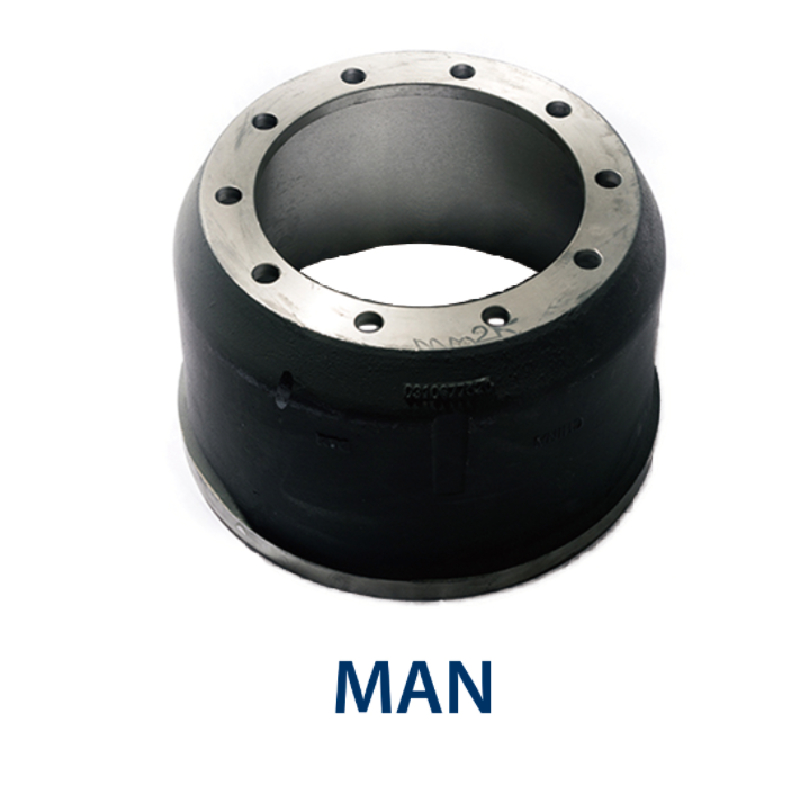Dec . 04, 2024 01:01 Back to list
Turning Techniques for Brake Drums and Their Impact on Vehicle Performance
The Importance of Turning Brake Drums in Automotive Maintenance
In the realm of automotive maintenance, few components are as crucial yet often overlooked as the brake drum. Central to the functioning of drum brake systems, these components play a vital role in ensuring vehicle safety and performance. Among the various maintenance practices associated with brake systems, turning brake drums stands out as a significant task that can enhance braking efficiency and prolong the lifespan of the braking system.
Understanding Brake Drums
Brake drums are cylindrical components mounted on the wheel hub of a vehicle. They provide a surface against which brake shoes press to create friction, thus slowing or stopping the vehicle. Unlike disc brakes, which feature a caliper squeezing the pads against a rotor, drum brakes rely on shoes that expand outward within the drum when the brake pedal is pressed. This design offers several advantages, including easier maintenance and cost-effectiveness, particularly in rear brake applications.
However, over time, brake drums can become uneven or warped due to various factors, including excessive heat generated from frequent braking and the natural wear that occurs with use. Such irregularities can lead to decreased braking performance, vibration during braking, and ultimately, a compromised safety system.
The Process of Turning Brake Drums
Turning brake drums—also referred to as resurfacing—is a process that involves machining the inner surface of the drum to restore it to a uniform thickness and smooth finish. This task requires specialized equipment, typically a brake lathe, which allows for precision machining of the drum while ensuring a uniform surface that can effectively grip the brake shoes.
The turning process begins by removing the drum from the vehicle and inspecting it for any defects, such as cracks or severe wear. If the drum is still within the manufacturer’s specifications for thickness and integrity, it can be resurfaced. The lathe grinds the inner surface of the drum, removing a small amount of material to eliminate any irregularities. This not only restores the drum’s performance but also prolongs its lifespan, which is especially critical for older vehicles.
Benefits of Turning Brake Drums
turning brake drums

2. Reduced Vibration and Noise Warped or uneven brake drums can cause vibrations and noise during braking. Resurfacing eliminates these issues, leading to a more comfortable and quieter ride.
3. Cost-Effectiveness Instead of replacing worn or damaged drums, which can be expensive, turning them can be a more affordable solution. This can save vehicle owners money in the long term while maintaining safety and performance.
4. Extended Component Life Regular resurfacing can help avoid premature wear on brake shoes, extending their life and that of the entire braking system.
5. Enhanced Safety The importance of effective braking cannot be overstated. By ensuring that brake drums are in good condition, vehicle owners can significantly enhance their safety on the road.
Maintenance Best Practices
To maintain brake system integrity, it’s essential to adopt a proactive approach
- Regular Inspections Periodically inspect brake components for wear, including brake drums and shoes. Look for signs of discoloration, grooves, or cracks in the drums. - Timely Turning Whenever brake shoes are replaced, consider turning the drums if they show signs of wear. This ensures optimal performance of the new components.
- Professional Help It’s advisable to have brake work done by professional technicians who can ensure that the resurfacing is done correctly and that the components are assembled properly afterward.
Conclusion
Turning brake drums is a critical yet often neglected aspect of vehicle maintenance that can significantly impact braking performance and safety. By understanding the process and benefits of this practice, vehicle owners can make informed decisions that enhance their driving experience while ensuring optimal safety on the road. Regular maintenance, including the turning of brake drums, is an investment in the vehicle’s longevity and a key factor in maintaining the safety of drivers and passengers alike.
-
HINO Industrial Efficiency-Jiangsu Hino Industrial|Productivity Optimization&Cost Reduction
NewsJul.12,2025
-
HINO-¡Ң���ຽ��е��������˾|Advanced Industrial Solutions&Energy Efficiency
NewsJul.12,2025
-
Premium Brake Drum Iveco – Durable Drum Brake Drum & Brake Shoe Solutions
NewsJul.08,2025
-
High-Performance Brake Drum Liza for Enhanced Safety Reliable Drum Brake Drum & Brake Shoe Solutions
NewsJul.08,2025
-
High-Quality Brake Drum MAZ – Durable Drum Brake Drum & Brake Drum and Brake Shoe for Optimal Performance
NewsJul.07,2025
-
High-Quality Brake Drum Kamaz for Reliable Performance Durable Drum Brake Drum & Brake Shoes
NewsJul.07,2025
